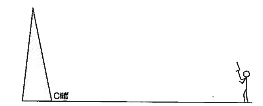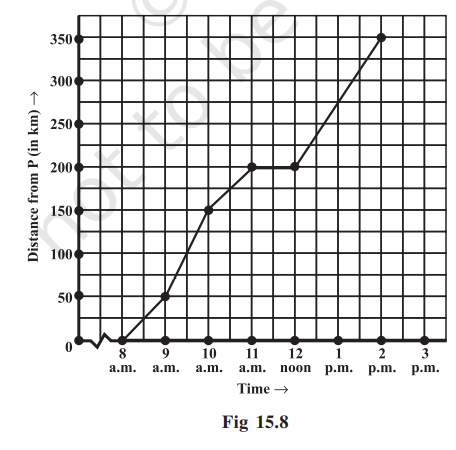When a person sneezes his eyes remain shut for about 0.5s. If the person is driving a race car at 108 km/hr how far does it move during that time?
To solve the problem of how far a race car moves when a person sneezes for 0.5 seconds while driving at a speed of 108 km/hr, we can follow these steps:
Step 1: Convert the speed from km/hr to m/s
The speed of the car is given as 108 km/hr. To convert this to meters per second (m/s), we use the conversion factor:
1 km/hr=13.6 m/s
Alternatively, we can multiply by 518:
Speed in m/s=108×518
Calculating this:
Speed in m/s=108×518=30 m/s
Step 2: Identify the time duration
The time duration for which the person's eyes remain shut is given as 0.5 seconds.
Step 3: Use the formula for displacement
The displacement (distance moved) can be calculated using the formula:
Displacement=Velocity×Time
Substituting the values we have:
Displacement=30 m/s×0.5 s
Step 4: Calculate the displacement
Now, we perform the multiplication:
Displacement=30×0.5=15 meters
Conclusion
Thus, the race car moves 15 meters during the time the person sneezes.
---
The speed of the car is given as 108 km/hr. To convert this to meters per second (m/s), we use the conversion factor:
1 km/hr=13.6 m/s
Alternatively, we can multiply by 518:
Speed in m/s=108×518
Calculating this:
Speed in m/s=108×518=30 m/s
The time duration for which the person's eyes remain shut is given as 0.5 seconds.
The displacement (distance moved) can be calculated using the formula:
Displacement=Velocity×Time
Substituting the values we have:
Displacement=30 m/s×0.5 s
Now, we perform the multiplication:
Displacement=30×0.5=15 meters
Thus, the race car moves 15 meters during the time the person sneezes.
Topper's Solved these Questions
- BOOK - ICSECHAPTER - DYNAMICSEXERCISE - SHORT ANSWER QUESTIONS WITH ANSWERES43videos
DYNAMICS
- BOOK - ICSECHAPTER - DYNAMICSEXERCISE - SHORT ANSWER QUESTIONS WITH ANSWERS12videos
DYNAMICS
- BOOK - ICSECHAPTER - DYNAMICSEXERCISE - VERY SHORT ANSWER QUESTIONS60videos
DYNAMICS
- BOOK - ICSECHAPTER - DIMENSIONSEXERCISE - SELECTED PROBLEMS (FROM CONVERSIONS OF ONE SYSTEMS OF UNITS INTO ANOTHER)9videos
DIMENSIONS
- BOOK - ICSECHAPTER - FRICTIONEXERCISE - Selected problems30videos
FRICTION
Similar Questions
A motorboat starting from rest on a lake accelerates in a straight line at a constant rate of 3.0m/s2 for 8.0s. How far does the boat travel during this time ?
View SolutionWhen a person leaves his home for sightseeing by his car, the meter reads 12352 km. When he returns home after two hours the reading is 12416 km. A. What is the average speed of the car during this period? B. What is the average velocity?
View Solution
Knowledge Check
- Question 1 - Select One
A person standing in front of a vertical cliff fires a gun and hears its echo in 3 s. The speed of sound in air is 340 m/s:

If the speed of sound changes to 350 m/s then how much distance should the person move towards or away from the cliff in order to hear the echo in the same time. Steps are given to calculate the distance. Select the correct sequence of the steps from the given option.
(i) 340+3502=2d3
(ii) 350−340=2d3
(iii) d=345×32=517.5m
(iv) d=302=15 m
(v) 7.5 mA(ii), (iii) then (v)B(iv) then (ii)C(iv) then (v)D(ii) then (iv)
A car that's initially traveling at 10m/s accelerates uniformly for 4 seconds at a rate of 2m/s2 in a straight line. How far does the car travel during this time ?
View SolutionA person walks along a straight road from his house to a market 2.5kms away with a speed of 5 km/hr and instantly turns back and reaches his house with a speed of 7.5 kms/hr. The average speed of the person during the time interval 0 to 50 minutes is (in m/sec)
View SolutionA person walks up a stalled 15 m long escalator in 90 s. When standing on the same escalator, now moving, the person is carried up in 60 s. How much time would it take that person to walk up the moving escalator? Does the answer depend on the length of the escalator?
View SolutionA person is standing at the edge of a slow moving river which is 1 km wide. He wishes to return to the camp ground on the opposite side of the river for which he may swim to any point on the opposite bank and then walk for the rest of the distance. The campground is 1 km away from the point on the opposite bank directly across from where he starts to swim. If he swims at the rate of 2 km/hr and walks at the rate of 3 km/hr, the minimum time taken by him is approximately 0.6 hr (b) 0.7 hr (c) 0.8 hr (d) 0.9 hr
View SolutionA car starts moving rectilinearly first with acceleration α=5ms−2 (the initial velocity is equal to zero), then uniformly, and finally, deceleration at the same rate α comea to a stop. The time of motion equals t=25s. The average velocity during this time is equal to <br>=72 km h^(-1) How long does the car move unitromly?
View SolutionThe given graph (Fig 15.8) describes the distances of a car from a city P at different times when it is travelling from City P to City Q, which are 350 km apart. Study the graph and answer the following:(i) What information is given on the two axes?(ii) From where and when did the car begin its journey?(iii) How far did the car go in the first hour?(iv) How far did the car go during (i) the 2nd hour? (ii) the 3rd hour?(v) Was the speed same during the first three hours? How do you know it?(vi) Did the car stop for some duration at any place? Justify your answer.(vii) When did the car reach City Q?
 View Solution
View SolutionAn amusement park ride consist of a large verticle cylinder that spins about its axis first fast enough that any person inside is held up againest the wall when the is μs and the radius of the cylider is R

a. Shown that maximum period of revolation neccessary to keep the person from falling is T=(4π2μsR/g)1/2
b. Obtain a numerical value for T taking R=4.00m and μs=0.400 . How many revolations per minute does the cylinder make?
c. If the rate of revolation of the cylinder is make to be some what larger what happens to the magnitude of each one of the forces acting on the person ? What happens to the motion of the person ?
d. If instead the cylinder rate revolution is made to be somewhat smaller what happens to the magnitude and what happens to the motion of the person ?View Solution

